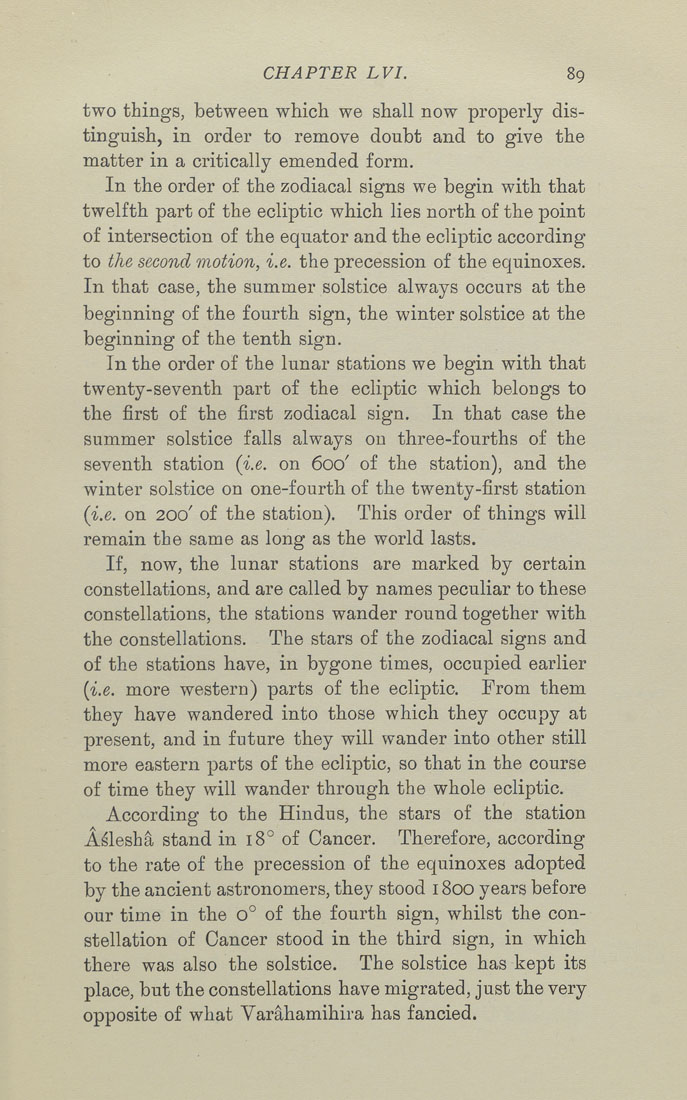CHAPTER LVI. 89
two things, between which we shall now properly dis¬
tinguish, in order to remove doubt and to give the
matter in a critically emended form.
In the order of the zodiacal signs we begin with that
twelfth part of the ecliptic which lies north of the point
of intersection of the equator and the ecliptic according
to the second motion, i.e. the precession of the equinoxes.
In that case, the summer solstice always occurs at the
beginning of the fourth sign, the winter solstice at the
beginning of the tenth sign.
In the order of the lunar stations we begin with that
twenty-seventh part of the ecliptic which belongs to
the first of the first zodiacal sign. In that case the
summer solstice falls always on three-fourths of the
seventh station (i.e. on 600' of the station), and the
winter solstice on one-fourth of the twenty-first station
(i.e. on 200' of the station). This order of things will
remain the same as long as the world lasts.
If, now, the lunar stations are marked by certain
constellations, and are called by names peculiar to these
constellations, the stations wander round together with
the constellations. The stars of the zodiacal signs and
of the stations have, in bygone times, occupied earlier
(i.e. more western) parts of the ecliptic. From them
they have wandered into those which they occupy at
present, and in future they will wander into other still
more eastern parts of the ecliptic, so that in the course
of time they will wander through the whole ecliptic.
According to the Hindus, the stars of the station
Aslesha stand in 18° of Cancer. Therefore, according
to the rate of the precession of the equinoxes adopted
by the ancient astronomers, they stood 1800 years before
our time in the 0° of the fourth sign, whilst the con¬
stellation of Cancer stood in the third sign, in which
there was also the solstice. The solstice has kept its
place, but the constellations have migrated, just the very
opposite of what Varahamihira has fancied.
|








